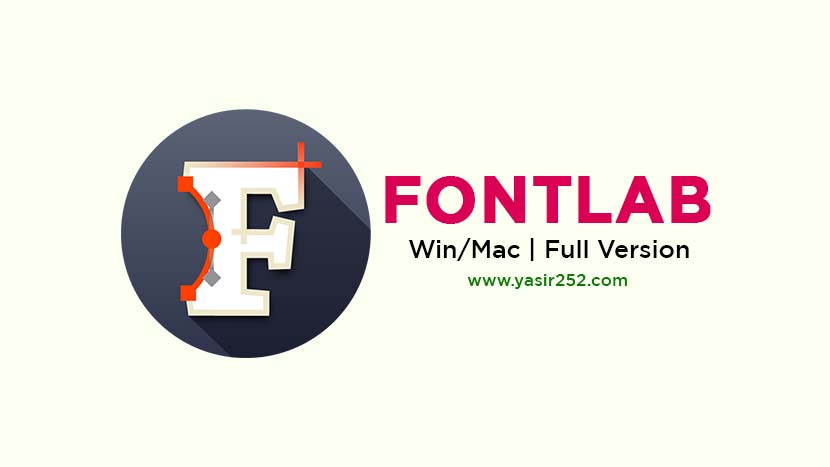
Variation, imported artwork, components, auto layers, elements Metrics, kerning, Font window, Font Info, hints, guides, classes General, editing, anchors, actions, FontAudit, copy-paste
Fontlab mac mac#
If you want to check it out: Glyphs is available in the Mac App Store as standard and Mini version.First Run on MacOS - Unidentified Developer warning So glyphs lets me concentrate on the design of my fonts, not the engineering part. This dramatically improves my type design workflow and allows me to create better fonts and react instantly to customer requests or bug reports. I have my test sheets in InDesign and if I see an error I correct it in Glyphs, do a one-click-export and InDesign will automatically pick up the new fonts and I can check the results. I have set up the InDesign font directory as the export folder and this allows me to test and change my fonts almost in real-time. And these filters are then automatically applied during the export and I don’t don’t have to apply them manually as a destructive edit for each instance.Īs you can see in this example, I have set up a font family of 12 styles which I can export with one click. On my inquiry Georg even added the option to set up filters like “rounding edges” with custom settings for each instance. I can just enter and change them easily in the Font Info dialogue box. All the settings for the instances are part of the font family settings. I don’t need Python and I don’t need to do any repetitive work just to test a version of my fonts in certain applications.
Fontlab mac pdf#
I just don’t want to be required to deal with these things in the first place and I would want to export my fonts like I export a PDF in InDesign.Īnd that’s where Glyphs comes in! It actually makes it possible to get from my working file to a full font family I can ship to my customers with just one click! And this is why I switched to Glyphs. But for me as a designer, it is not an option to replace unwanted repetitive work with learning Python and having extra work with writing and fixing Python code. Some foundries try to overcome these problems by creating clever Python scripts to automate as much of these steps as possible. So I am never really sure that I generate the new fonts exactly in the same way as when I exported the fonts the last time. And when I am finally done and export the fonts, the creation depends on dozens of checkboxes in the FontLab Studio preferences, which I cannot save as a preset. I then need to clean up these instances, deal with overlaps, check path directions, deal with the hinting, set up the naming for each style, …Īnd I need to repeat this for every style in the font family. I first need to create so-called instances from the multiple master font.
Fontlab mac series#
But getting from this file to a font that I can test in an application or ship to my customers requires an endless series of steps. vfb file, where I can edit all these masters. For example: When I create a type family with several weights and widths, I would have to set up a multiple master font.

Fontlab mac professional#
It requires a lot of expert knowledge to create professional typefaces and it’s a tedious process. That famous checkbox in the FontLab preferences says it all: “Use this option only if you know what you are doing”.

Type design is done be a small amount of people in the world and the tools we use are expert tools as well. Unfortunately, such a workflow is hardly possible in the world of type design-until now.

And when I am done, I can update-for example-my print PDF with one click, using my export presets in InDesign. So at any time, I can make changes without the need to repeat previous steps. That’s why in apps like Photoshop and InDesign I am a master of smart objects, smart filters, objects styles, nested character styles and the like. I love all these features, but the reason I switched to glyphs is not really a feature per se, its the workflow in general! I love my job as a designer, but I hate to do repetitive work. If you browse the Glyphs website you will find a lot of innovative features-like the combined text and drawing view, the amazing accent cloud view or the automatic creation of OpenType features. After over 10 years of working with FontLab (Studio) I now switched entirely to Glyphs by Georg Seifert. First there was Fontographer, then FontLab Studio, and now we have Glyphs and RoboFont-two new Mac font editors developed by individual designers/developers.


 0 kommentar(er)
0 kommentar(er)
